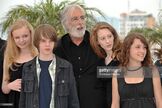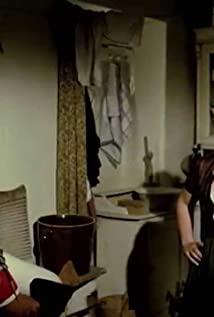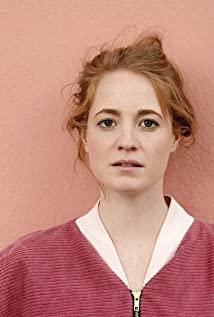It is estimated that the first reaction of many people after watching "White Ribbon" is to watch it again immediately, be sure to find the murderer! Of course, as long as you review the first five minutes of the film, you will suddenly realize: It turns out that the director gave the answer from the beginning. Murder and suspense are the usual elements of commercial films, which in the eyes of director Haneke is too cheap, so he disdains to arrange a detective to reveal the mystery at the end of the film, but to let the teacher close to the truth return without success. If the audience wants to protest, you can imagine Hanek’s response: You look for a stream, but I give you the sea, you look for flowers, but I give you spring, are you still not satisfied?
Like all classic works, "White Ribbon" has a steady pace. The director is confident, and the plot advances slowly; there are many long shots and empty shots in the film, and the camera seems to be welded. It is rare to move, and it is also slow to move. , Cautiously, like a snake foraging or an Indian hunting, Hanek ignores the turbulent wind and waves, and only presents calm waves. He only lets you see the oak barrels, and does not open the lid to show the fermentation scene, but you know it. It must be good wine. In addition, the film adopts black and white tones, but the picture is extremely beautiful. Some shots can be directly intercepted to make landscape postcards (wheat fields, snow scenes), and some compositions are very oily (such as Anna's silhouette under the lamp), which makes the overall style of the film. Both depressive and elegant. This overly restrained and introverted style makes the audience feel daunted and deeply realize that "beauty is difficult". Some commentators say that in the future, they will have to go around the director's work.
Haneke is good at expressing deformed things. While satisfying the audience's desire for voyeurism, he also beats and even abuses the audience. "Piano Teacher" expresses the infamous love between teachers and students, without any romantic factors, except for the beauty of the wind, leaving only the crazy woman who has been beaten up by desire. On the other hand, the audience will find their own "skeleton in the closet"; Two lunatics abused the family in "Happy Heart" and hinted in the play that they did it for the audience and to cater to the audience's evil taste. This is undoubtedly torturing the audience's conscience; and "White Ribbon" abuses the audience, The performance is just not telling you the answer, making you very depressed, after reading it, you will have to read it again as if you have obsessive-compulsive disorder. ――Haneck is like a robber in the Stockholm incident, torturing the audience over and over again, but the infatuated audience still has to give him the master's laurel. According to the theory of reception aesthetics proposed by the German professor Jauss, works are only texts before they are accepted, tasted, and feedbacked by the audience, and works only after interaction is formed, that is, works are texts that are perceived, prescribed and created by the aesthetic subject. As a kind of artwork, film is also suitable for this theory. Before a movie is shown, it is a pile of films. After it is shown, it becomes a film of light and shadow art, and the film is more dependent on the audience. In a sense, the audience participates in the "post-production" of the film. I don’t know if Haneke has a deep research on the aesthetics of reception, but he uses this theory very skillfully. He has very high expectations of the audience. To watch his works, the audience has to work harder, almost to the extent of being abused. His work can barely reach the edge of the core of his work. He tells us: It is not good to be a director, nor is it good for a competent audience.
In "White Ribbon" Haneke, as always, led the audience to reflect together. This time he pointed to the hidden crimes in the countryside. He suggested that the white ribbon of the priest and the red armband of the Nazis are tied in the same position. The story takes place in the German countryside before and after the First World War. According to the German speculative tradition, choosing the place where such a story takes place means: the countryside, the land, and the place where everything takes root. This village has a solid power structure: political power, theocracy, patriarchy, and husband's power are four in one, which firmly controls everyone under its governance, but each power has been challenged and failed to become an army. It is the baron who holds the power, he is the landlord of Junker, and half of the village is his employees. The class he belongs to is politically extreme conservatism, advocating autocratic monarchy, advocating force, hostile to the republic, and is a strong supporter of Hitler's regime. This master caused a farmer’s wife to die in an accident due to improper employment. He was indifferent and did not show anything. The children’s group headed by the priest’s daughter Clara dragged his son to a beating. He tried his best to find the murderer without any clue. He had to go to Italy to avoid disasters; the priest is an agent of theocracy, and he exercises Spartan management on his children. He invented the method of tying and untying white ribbons to restrain the children of police. The priest’s perversion Strictness does not make the children convincing, and the appearance of surrender is double resistance. In the film, the white ribbon has nothing to do with purity. It is a symbol of discipline and a materialized manifestation of power oppression. But the seemingly powerless theocracy also encountered Waterloo. Clara stabbed her father’s bird to death with scissors and placed it on her father’s desk in the shape of a cross. In the face of this provocative demonstration, the priest still had to be in the baptism ceremony. The priest gave her daughter holy water. Even the pastor, after learning that all the murder plotters were daughters and sons, did not dare to make a public statement and tried to hide it. In the West, resistance to theocracy has been around for a long time. Nietzsche, the philosopher who called out "God is dead" for the first time, was a German. Hitler borrowed from his superhuman philosophy and openly implemented a policy of genocide against Jews. In the absence of the overseers and judges, there is nothing to do. A philosophy of humiliating Buddha and ancestors opens the way for grand sins. Haneke hermits that the decline of theocratic power has opened the door to the sins of modernity. The baron's roar to his wife and the doctor's abandonment of his lover as a slapstick show the ruthlessness of the husband's power. The women are also ruled. Like the children's group headed by Clara, they also chose to resist. As for patriarchy, it is mostly presented in violent ways. Pastors, housekeepers, and old farmers all beat and scold their children, while doctors act on their daughters in the name of patriarchy. Ensuring the husband’s power is even more a kind of evil sexual violence. The doctor’s falling horse in the film is the punishment of the children’s group. He knows that he can only suffer from dumb losses. Secretly fled to the field. ――Children are very capable of learning. The adults in the countryside have taught them discipline, rules, and violence against those who break the rules. The children use what their parents taught them to oppose their parents. They are well versed in the so-called unity of people. The ancient teachings of Mount Tai and the invincible revolution of strengthening discipline. The children’s group’s magical appearance and dripping water testify to the terrible height of discipline. They used what they learned to defeat barons, priests, doctors, and teachers, and burn out the shadow of authority. A corner of it.
When showing patriarchy, an important item repeatedly appeared: horse whip. When the priests and butlers’ children were beaten, they were all served with horse whips. The horse whip is an image related to a violent machine. A general's whip is pointed and millions of troops conceal the past like a flood. This is a common scene of war. These battered children will grow up later and become the tyranny of the Third Reich. They will take up the tools that were beaten to beat people all over the world, and lash out and flog the world. At the same time, the film also shows that violence lacks ethics, rules, and compassion. The parents ravaged the weak, and the children ravaged the weaker. They attacked the baron’s young son, the mentally retarded child, Kali, and even newborns and small animals. , Its cruelty is outrageous. Under the authoritarian control of their parents, the children did not become pure and innocent, but learned violence from violence, and turned individual violence into organized violence. In this relatively closed village, violence remains unchanged, but the perpetrators are passed on from generation to generation. We can see that violence is genetically mutated and escalated. Looking back at the horse whip, it is inevitable that it has the symbolic meaning of the baton. The beast of violence has been raised by generation after generation, and finally two world wars have erupted in succession within a century. Haneke is like a nutritionist, accurately analyzing what breeds the devil in people's hearts.
The story teller is a village teacher, a passer-by, observer, and witness. The film intersperses his love and marriage with the maid Eva in a series of mysterious assaults. It is the only bright, warm-toned, depressive story in the entire repressive story. A successful bridge segment. There is also a warm episode in the film. The pastor’s youngest son took care of the injured bird, and after the pastor’s pet bird was killed, he gave his bird to his father to relieve his father’s loneliness and pain. ――What is Haneke's intention? Is it to show that the world still has true feelings, after all, there is still such a thing as purity in the world? ――Perhaps both are right, but of course it is only the shallower level he wants to express. If we go deeper, it is Haneke who embeds hope for mankind in these three people and expresses his confidence in the future of mankind. These few " "Normal people" are a bit of candlelight in the dark scene. The director should take care of this little light, so that people can see that the magic claws of the countryside have people and things beyond their reach. Even in the birthplace of evil, there are seeds of hope gestating. .
Stray German, austere Haneke, classical movies, deep propositions, "White Ribbon" turns the totalitarian violence, the eternal confidant of mankind, from the forgotten corner, exposed it on the screen, showing its power, Warn people not to be too optimistic, its threat still exists. Many people regard "White Ribbon" as a prequel to the Nazis, and its purpose is to warn people not to let the Third Reich produce a sequel. In fact, the film reflects not only the problems of Germany, nor is it just about the cultivation of the Nazis, but about all society. An allegory of morphological operation mode. Standing on the wasteland of modernity, sensitive to the crazy absurdity of mankind in modern society, Kafka aspired to be the night watchman of mankind, and now he has another companion, the German director Hanek.
View more about The White Ribbon reviews










